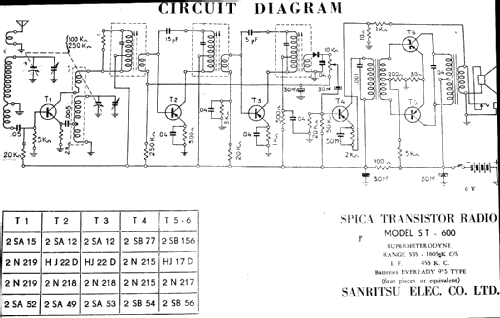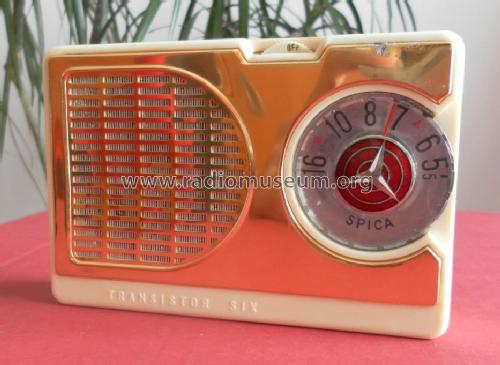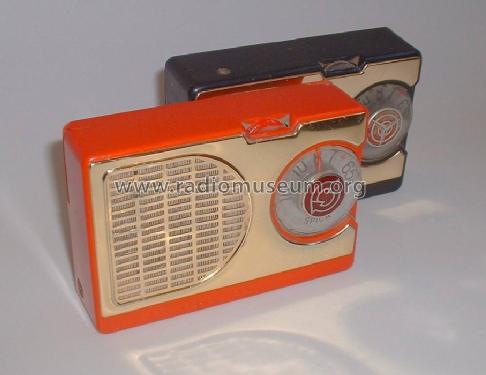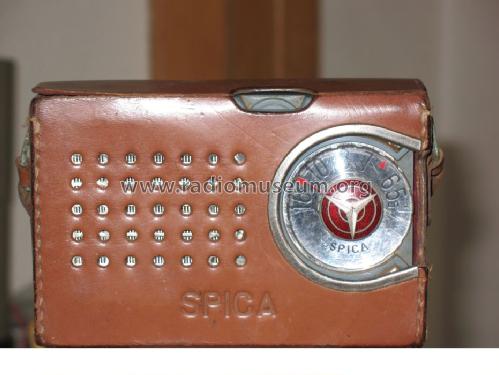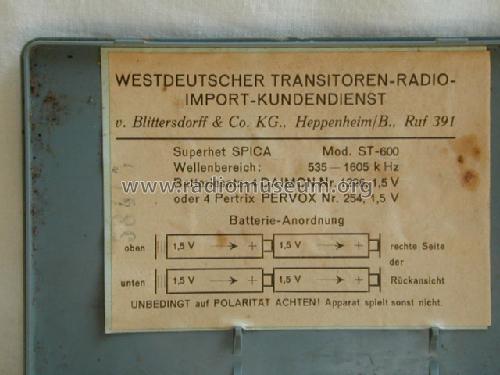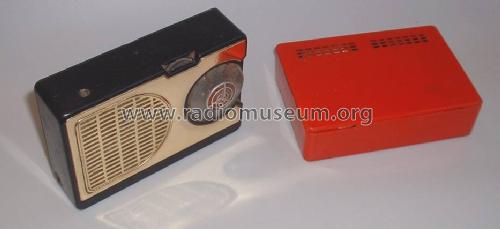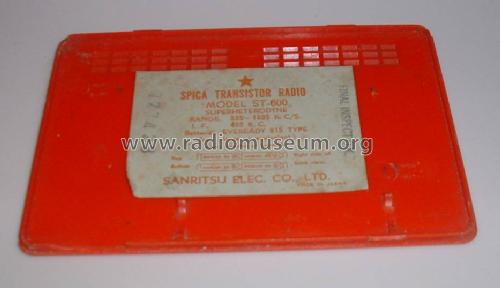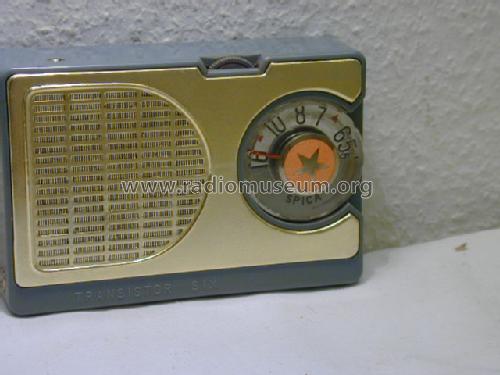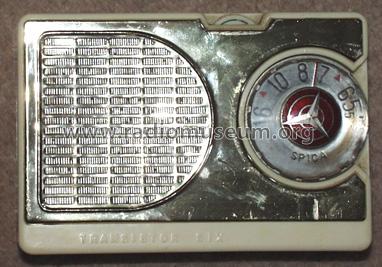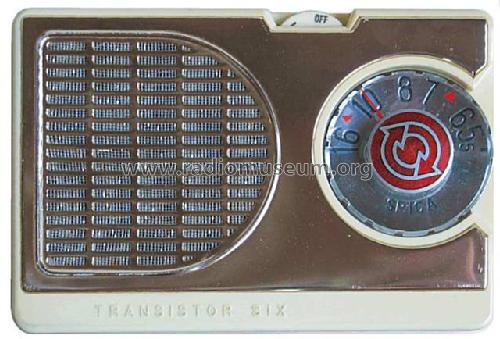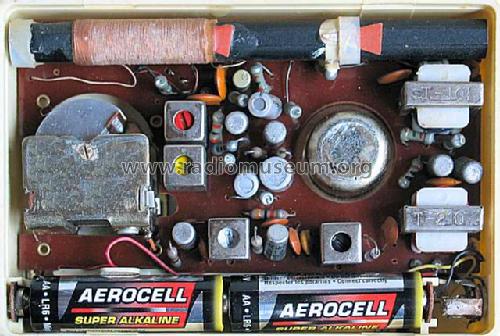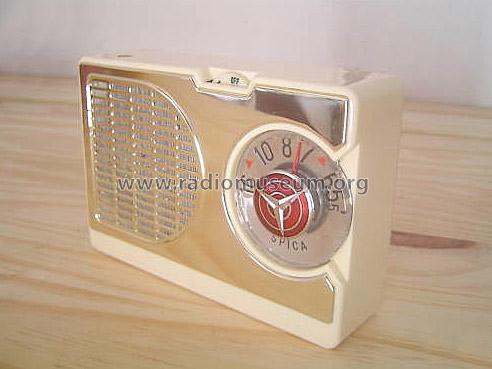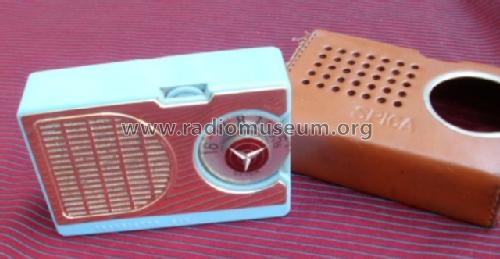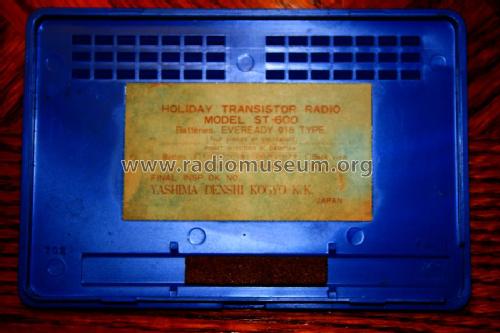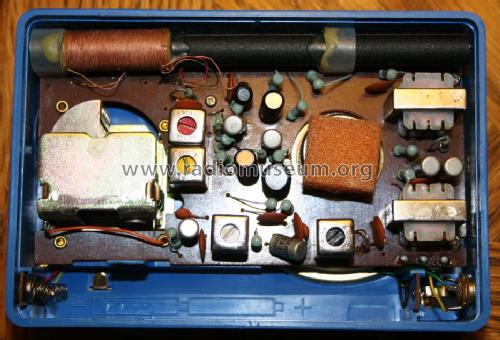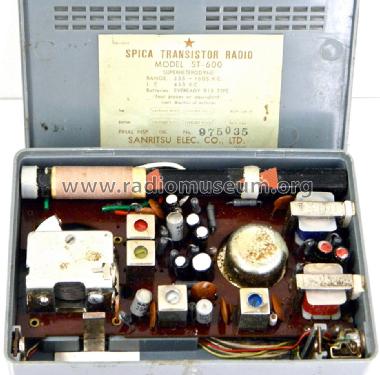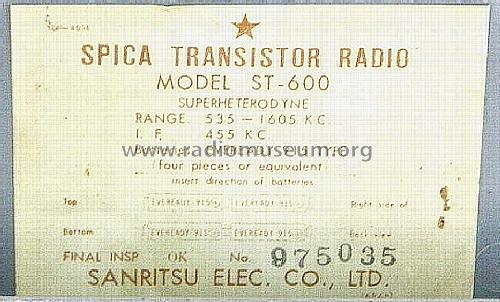Spica Transistor Six ST-600
Sanritsu Electric Co., Japan Transformer Works, Sanritz; Tokyo
- Country
- Japan
- Manufacturer / Brand
- Sanritsu Electric Co., Japan Transformer Works, Sanritz; Tokyo
- Year
- 1958 ?
- Category
- Broadcast Receiver - or past WW2 Tuner
- Radiomuseum.org ID
- 117927
Click on the schematic thumbnail to request the schematic as a free document.
- Number of Transistors
- 6
- Main principle
- Superheterodyne (common); ZF/IF 455 kHz; 2 AF stage(s)
- Tuned circuits
- 5 AM circuit(s)
- Wave bands
- Broadcast only (MW).
- Power type and voltage
- Dry Batteries / 4 × UM3 = 6 Volt
- Loudspeaker
- Permanent Magnet Dynamic (PDyn) Loudspeaker (moving coil) / Ø 2.75 inch = 7 cm
- Power out
- 0.27 W (unknown quality)
- Material
- Plastics (no bakelite or catalin)
- from Radiomuseum.org
- Model: Spica Transistor Six ST-600 - Sanritsu Electric Co., Japan
- Shape
- Very small Portable or Pocket-Set (Handheld) < 8 inch.
- Dimensions (WHD)
- 126 x 85 x 34 mm / 5 x 3.3 x 1.3 inch
- Notes
-
The model Spica ST-600 from Sanritsu Electric Machine Co. was available in different cabinet colors.
There are different dial scale designs (arrows, 5-point star, 3-point star). The model was also made with alternative transistor complements, e.g. 2SA52, 2SA49, 2SA53, 2SB54, and 2× 2SB56.
At least two circuit boards have been used. The easiest way to recognize them is to look at the I.F. transformers which either may be on the same line, or offset. The relationship, if any, between the different circuit boards and the different dials is not known with certainty.
The ST-600 comes with its original gift box, leather carry case, leather earphone case, earphone, instructions and warranty card.
Sanritsu released a vertical version of this radio, model Spica ST-608.
There is also a similar seven transistor variant with a plain gold textured speaker grill named Spica Super 7. Other radios with similar appearance are found under the names Holiday, Impala and Spiket Deluxe.
- Net weight (2.2 lb = 1 kg)
- 0.3 kg / 0 lb 10.6 oz (0.661 lb)
- Price in first year of sale
- 149.00 DM
- Mentioned in
- Collector's Guide To TrR1 Bunis trans.94 (1996, page 261)
- Literature/Schematics (1)
- Funk-Technik (FT) (4/1958, S. 123)
- Author
- Model page created by Mario Bermejo. See "Data change" for further contributors.
- Other Models
-
Here you find 36 models, 33 with images and 6 with schematics for wireless sets etc. In French: TSF for Télégraphie sans fil.
All listed radios etc. from Sanritsu Electric Co., Japan Transformer Works, Sanritz; Tokyo
Collections
The model Spica Transistor Six is part of the collections of the following members.
- Mario Bermejo (RA)
- William J Blanchflower (GB)
- Jose Duarte Costa (P)
- Angelo Daniele (I)
- Nigel Durrant (CDN)
- John Hupse † 28.9.20 (NL)
- Lucas Lopardo (RA)
- Dario Marujo (RA)
- Hector Ruben Menendez (RA)
- Jose Mesquita (P)
- Rodolfo Gaston Wenceslao Nasasta (RA)
- Enrique Palacio (RA)
- José Manuel Silvestre (P)
- Francisc VISKY (RO)
- Eckhard Wegner (D)
- Fabio Zannier (I)

